Table Manners And First Code Of Correct Behavior Were Introduced In Egypt 2,500 B.C. By Ptahhotep
Ellen Lloyd - AncientPages.com - Louis XIV, known as Louis the Great or the Sun King (1638 – 1715), couldn’t stand bad table manners. The Sun King is today remembered as a royal who preferred art over politics. He was also a king who introduced complicated rules for doing anything, including dining.
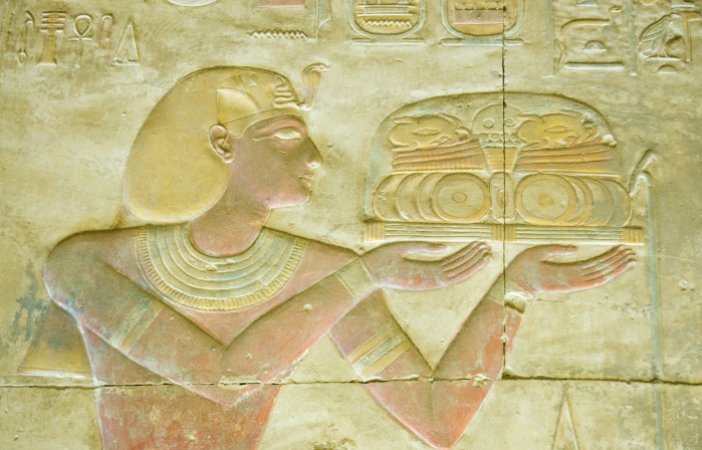
Ancient Egyptians were familiar with table manners in 2,500 B.C. Credit: BasPhoto - Adobe Stock
Around 1669, King Louis the Great became the “first person in Europe to offer his guests a place setting with knives, forks, and spoons; he ordered the knives should have rounded ends to prevent injury should things turn ugly.” 1
Forks were still a new trend, and many were reluctant to use forks. “When the first forks appeared, they caused a sensation, but getting people to use them for eating was not easy. Not only were forks very expensive, but they were also disapproved by the Church, and people did not know how to use them.” 2
The Church argued God had created humans with fingers so they could touch and eat God’s food. People may have listened to the Church, but obviously, they didn’t pay much attention to these warnings. The Church’s disapproval did not stop people from producing gold and silver forks that wealthy families in Tuscany wanted to have at the dining table.
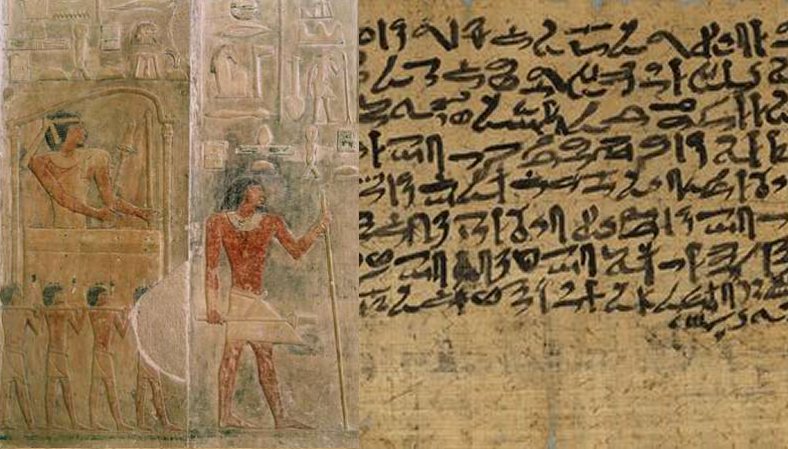
Left: Ptahhotep on a palanquin, relief from his tomb. Werner-Forman Archive/Heritage-Images - Right: The Maxims of Ptahhotep, Public Domain
Slowly, eating etiquette evolved in Europe. People washed their hands before dinner and stopped blowing their noses into their palms during the meal.
One would think table manners were introduced in Europe, but that’s wrong. Europeans suddenly felt they had “discovered” what should be considered proper manners at the table. However, these table manners and dining etiquette were introduced in Egypt in about 2,500 B.C.
“During the Fifth Dynasty (2,500 B.C. – 2,350 B.C.), Egyptian Vizier Ptahhotep, occasionally known as Ptahhotep I, Ptahhotpe or Ptah-Hotep, wrote several instructions based on his wisdom and experiences.
His precious text contains advice on how to live your life, and much of what he wrote is still highly relevant today.” 3
The first historical evidence of correct behavior can be traced to Ptahhotep’s book The Instructions of Ptahhotep.
Knowledge of our ancestors’ views of correct manners became evident with the discovery of the ancient Egyptian Prisse Papyrus. The text datable to the Middle Kingdom was found inside the coffin of Pharaoh Sekhemre-Wepmaat Intef of the 17th Dynasty at Thebes.
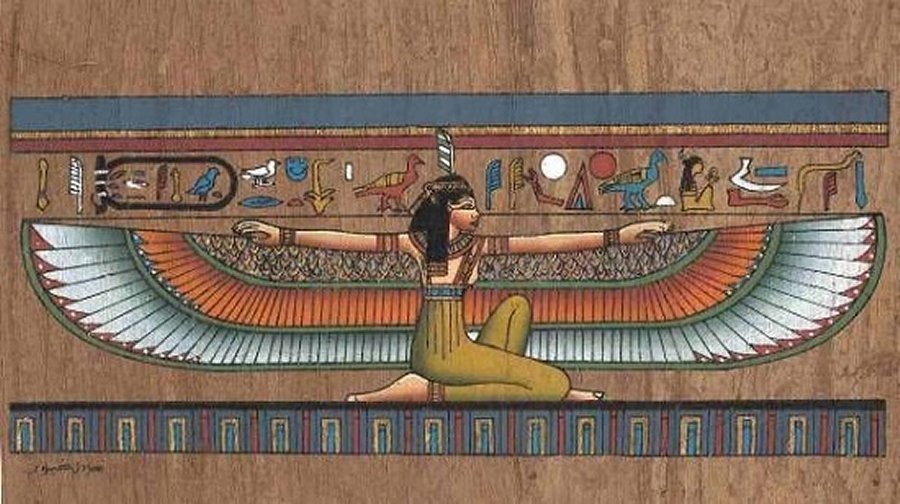
Maat - Ancient Egypt’s Most Important Religious Concept - Read more
The papyrus document contains the last two pages of the Instructions of Kagemni, followed by the only complete surviving copy of the Instructions of Ptahhotep.
The precious papyrus that predates the Bible by about 2,000 years now resides in the Paris antiquities collection.
One must admit that even from our modern perspective, it’s a fascinating ancient text that gives so much advice on behaving in ordinary situations.
“In the company of one’s superior, the book advises, “Laugh when he laughs.” It suggests overlooking one’s quiddities with a superior’s philosophy, “so thou shalt be very agreeable to his heart.” There are numerous references to the priceless wisdom of holding one’s tongue, first with a boss: “Let thy mind be deep and thy speech scanty,” then with a wife: “Be silent, for it is a better gift than flowers.” 4
Vizier Ptahhotep was, in many ways, a man ahead of his time. When the Bible was written, his 2,500-year-old advice had been well circulated throughout the Nile delta of Egypt and the fertile crescent of Mesopotamia. Scholars who have studied the Bible have discovered strong echoes of The Instructions Ptahhotep in the Holy Book. The Bible frequently mentions food in various contexts, and the vizier’s guidelines, especially in Proverbs, contain instructions on how to eat and prepare food.
To embrace the central concept of Egyptian wisdom, one must first understand the importance of the goddess Maat, which symbolizes cosmic order and social harmony.
Students of the Old Testament will find many themes reflecting Egyptian instructions written by Ptahhotep, who covered all topics, including table manners.
Updated on January 5, 2024
Written by Ellen Lloyd – AncientPages.com
Copyright © AncientPages.com All rights reserved. This material may not be published, broadcast, rewritten or redistributed in whole or part without the express written permission of AncientPages.com
Expand for references- Nicholas Clayton - A Butler's Guide to Table Manners
- Sutherland - Troublesome Ancient History Of Forks Started In Tuscany, Italy In 11th Century, AncientPages.com
- Ellen Lloyd - Secrets Of Maxims Of Ptahhotep – Ancient Egyptian Wisdom Is Still Relevant Today. AncientPages.com
- Panati, Charles - Extraordinary Origins of Everyday Things
- Fontaine, Carole R. "A Modern Look at Ancient Wisdom: The Instruction of Ptahhotep Revisited." The Biblical Archaeologist44, no. 3 (1981): 155-60. Accessed October 26, 2020. doi:10.2307/3209606.
More From Ancient Pages
-
 Why Is The Battle Of Gaugamela Called Broken ‘Camel’s Back’?
Ancient History Facts | Jul 1, 2020
Why Is The Battle Of Gaugamela Called Broken ‘Camel’s Back’?
Ancient History Facts | Jul 1, 2020 -
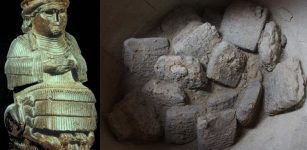 Sensational Find: Huge Cuneiform Archive Of Mysterious Ancient Clay Tablets Discovered In Iraq
Archaeology | Oct 26, 2017
Sensational Find: Huge Cuneiform Archive Of Mysterious Ancient Clay Tablets Discovered In Iraq
Archaeology | Oct 26, 2017 -
 Native Americans’ Visions Of Distant Explorers May Unravel Some Ancient Mysteries Of North America – Archaeological Evidence – Part 2
Ancient Mysteries | Nov 21, 2019
Native Americans’ Visions Of Distant Explorers May Unravel Some Ancient Mysteries Of North America – Archaeological Evidence – Part 2
Ancient Mysteries | Nov 21, 2019 -
 Traces Of A 9,000-Year-Old Lost Unknown Civilization Discovered In Lake Huron, Michigan
Civilizations | Aug 11, 2014
Traces Of A 9,000-Year-Old Lost Unknown Civilization Discovered In Lake Huron, Michigan
Civilizations | Aug 11, 2014 -
 Rare Three-Bladed Arrowhead Hidden Under The Ice Was Last Touched By A Viking – Scientists Say
Archaeology | Jan 4, 2023
Rare Three-Bladed Arrowhead Hidden Under The Ice Was Last Touched By A Viking – Scientists Say
Archaeology | Jan 4, 2023 -
 Extraordinary Viking Boat Burial Of Two People Unearthed In Central Norway
Archaeology | Nov 20, 2019
Extraordinary Viking Boat Burial Of Two People Unearthed In Central Norway
Archaeology | Nov 20, 2019 -
 Underground Ancient City Of Kish And Its Advanced Hydraulics System
Ancient Technology | Aug 28, 2015
Underground Ancient City Of Kish And Its Advanced Hydraulics System
Ancient Technology | Aug 28, 2015 -
 Old Sword Decorated With Inscription And Related To 1173 Battle Of Fornham – Unearthed
Archaeology | Apr 8, 2017
Old Sword Decorated With Inscription And Related To 1173 Battle Of Fornham – Unearthed
Archaeology | Apr 8, 2017 -
 Early Human Communication May Have Been Influenced By Changing African Landscape – Anthropologists Say
Evolution | Dec 28, 2023
Early Human Communication May Have Been Influenced By Changing African Landscape – Anthropologists Say
Evolution | Dec 28, 2023 -
 Mystery Of Lama Dashi-Dorzho Itigilov: A Mummy Whose Body Defies Time
Featured Stories | Sep 21, 2018
Mystery Of Lama Dashi-Dorzho Itigilov: A Mummy Whose Body Defies Time
Featured Stories | Sep 21, 2018 -
 Why Is Caganer, The Pooping Man Part Of The Catalonian Christmas Tradition And Nativity Scene?
Christmas Traditions | Dec 18, 2024
Why Is Caganer, The Pooping Man Part Of The Catalonian Christmas Tradition And Nativity Scene?
Christmas Traditions | Dec 18, 2024 -
 LIDAR Discovers Lost Colonial City Hidden In The Amazon Rainforest
Archaeology | Oct 22, 2024
LIDAR Discovers Lost Colonial City Hidden In The Amazon Rainforest
Archaeology | Oct 22, 2024 -
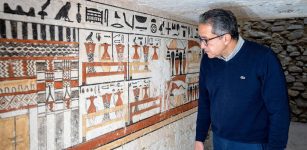 Five Magnificent Engraved Ancient Tombs Discovered Near King Merenre Pyramid In Saqqara, Egypt
Archaeology | Mar 19, 2022
Five Magnificent Engraved Ancient Tombs Discovered Near King Merenre Pyramid In Saqqara, Egypt
Archaeology | Mar 19, 2022 -
 Mystery Of Ancient “Magical” Mirrors – Some Of The Strangest Objects In The World
Ancient Mysteries | Apr 21, 2011
Mystery Of Ancient “Magical” Mirrors – Some Of The Strangest Objects In The World
Ancient Mysteries | Apr 21, 2011 -
 Goibniu: The Sword Smith Of Tuatha De Danann Who Forged Weapons For Battles In Celtic Mythology
Celtic Mythology | Jan 31, 2020
Goibniu: The Sword Smith Of Tuatha De Danann Who Forged Weapons For Battles In Celtic Mythology
Celtic Mythology | Jan 31, 2020 -
 Lindholm Høje Burial Site With 700 Graves Dated To The Iron And Viking Ages
Featured Stories | Nov 17, 2016
Lindholm Høje Burial Site With 700 Graves Dated To The Iron And Viking Ages
Featured Stories | Nov 17, 2016 -
 Remarkable Thracian Tomb In Huge Mound Necropolis Of Kazanlak, Bulgaria
Featured Stories | May 13, 2024
Remarkable Thracian Tomb In Huge Mound Necropolis Of Kazanlak, Bulgaria
Featured Stories | May 13, 2024 -
 Björketorp Runestone With Frightening Message Is Still Untouched In Blekinge, Sweden
Featured Stories | Mar 19, 2023
Björketorp Runestone With Frightening Message Is Still Untouched In Blekinge, Sweden
Featured Stories | Mar 19, 2023 -
 Ancient DNA Reveals: Iberian Males Were Almost Completely Replaced Between 4,500 And 4,000 Years Ago
Archaeology | Mar 15, 2019
Ancient DNA Reveals: Iberian Males Were Almost Completely Replaced Between 4,500 And 4,000 Years Ago
Archaeology | Mar 15, 2019 -
 ‘Tonina Chiapas’ Mayan Pyramid In Southern Mexico Is Among The Largest Yet Found
Civilizations | Oct 29, 2018
‘Tonina Chiapas’ Mayan Pyramid In Southern Mexico Is Among The Largest Yet Found
Civilizations | Oct 29, 2018
